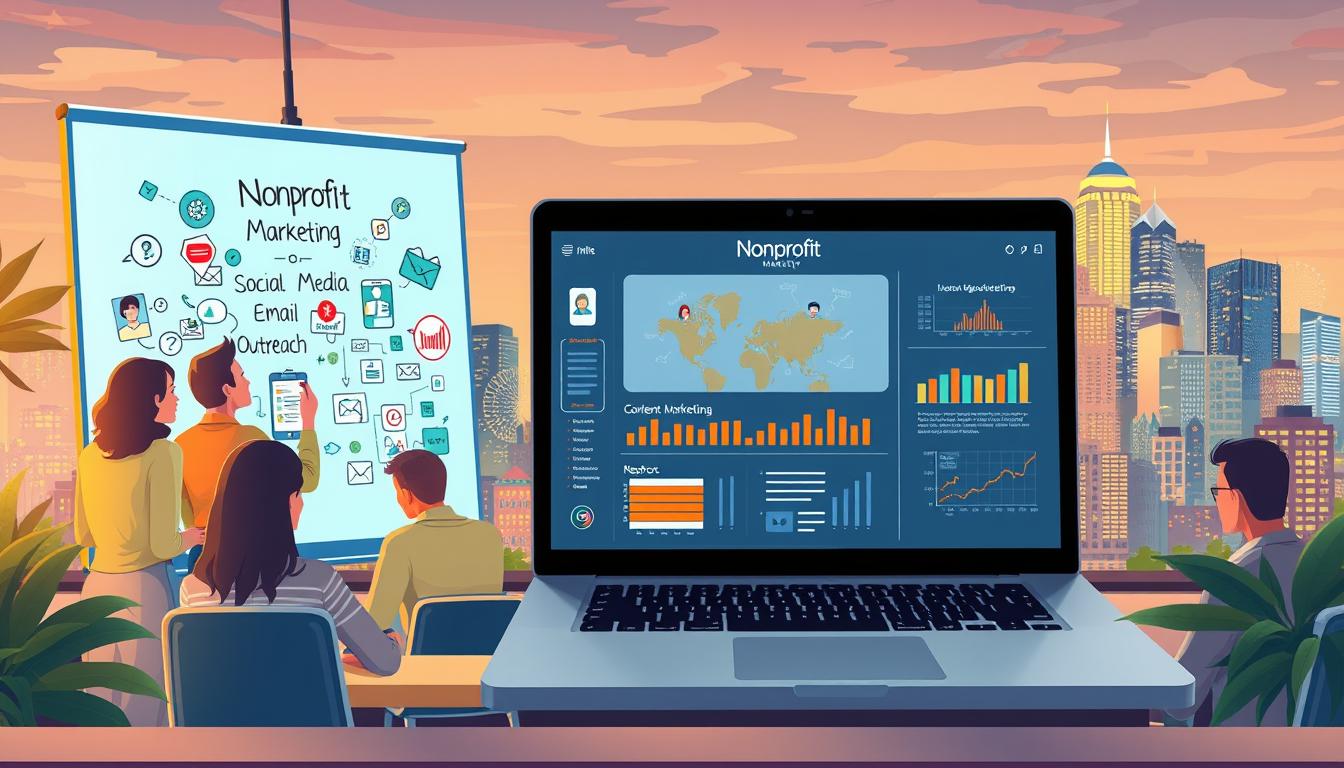Nonprofit marketing needs a smart plan, using lessons from big companies. Groups focused on helping others can really boost their cause awareness. They can do this by using new marketing ideas from the business world.
The way nonprofits market has changed a lot. Now, they need better ways to get people’s attention and really connect with them. By using smart marketing, nonprofits can share their mission more effectively and build strong ties with their community.
Good nonprofit marketing is more than just asking for money. It’s about telling stories that touch people’s hearts. It’s about using the internet well and making experiences that make people want to help.
Key Takeaways
- Embrace storytelling as a powerful communication tool
- Develop authentic and targeted messaging
- Utilize digital marketing channels strategically
- Prioritize personalized donor experiences
- Consistently measure and adapt marketing efforts
- Invest in technology and data-driven insights
Understanding The Power of Emotional Connection in Nonprofit Marketing
Emotional marketing has changed how nonprofits reach out to their supporters. Studies show that 70% of donors are swayed by emotional stories when choosing to give. This method is more than just talking to people.

Donor engagement grows when nonprofits make real connections that touch people’s hearts. Brand storytelling is the key that turns onlookers into true supporters.
Building Trust Through Authentic Storytelling
Successful nonprofits know that emotional bonds lead to action. They use several strategies:
- Sharing real, impactful stories
- Showing their missions clearly
- Pointing out how they help the community
Creating Personalized Donor Experiences
Personalization is key in today’s nonprofit marketing. Emotional marketing campaigns that feel close and true can greatly boost brand feelings. Groups that focus on emotional branding see more trust and lasting support from donors.
Developing Impact-Driven Narratives
Visual storytelling is vital for attracting donors. Powerful images can stir feelings right away, possibly doubling donor recognition. Nonprofits that show their impact see a 25% jump in repeat donations.
By using emotional connection strategies, nonprofits can turn supporter relationships into deep, lasting bonds.
Strategic Audience Targeting for Mission Success
Successful nonprofits know that reaching the right people is key. They understand different groups have their own reasons and ways to get involved.
Getting to know your audience well is crucial. You can sort them out in many ways:
- Donors: Based on how much they give and how often
- Volunteers: By their skills and when they can help
- Supporters: By who they are and what they believe in
Social media is vital for connecting with these groups. About 60% of groups check their audience-targeting methods with data. This shows how important using facts is.
Here are some ways to target your audience well:
- Do a SWOT analysis to find good ways to talk to people
- Set SMART goals for your messages
- Try A/B testing to make your messages better
Nonprofits can learn a lot by listening to people, doing surveys, and talking directly. People remember stories 22 times more than facts. This shows how powerful personal stories are.
By really getting to know your audience, nonprofits can make a bigger impact. They can create marketing that truly connects and supports their cause.
Maximizing Digital Marketing Impact for Nonprofits
Digital marketing has changed how nonprofits reach out to supporters and advance their causes. With smart strategies, nonprofits can grow their influence and success online.

Today, nonprofits have great chances to boost their impact with digital marketing. The internet offers strong tools for fundraising and social media. These tools can greatly increase an organization’s reach.
Leveraging Social Media for Cause Awareness
Social media gives nonprofits special ways to connect with supporters and share their message. Important tactics include:
- Creating eye-catching visual content
- Starting hashtag campaigns
- Sharing stories of impact
- Hosting online events
Optimizing Content for Search Engines
To be seen more online, nonprofits need to make content that search engines find valuable. Using the right keywords and creating content that people can find helps a lot.
Implementing Data-Driven Campaign Strategies
Good digital marketing needs a plan. Nonprofits can use data to:
- See how donors engage
- Check how campaigns do
- Improve who they target
- Make fundraising better
Ready to change your nonprofit’s digital marketing? Contact Crowley Media Group for expert advice on creating strong online strategies that make a difference.
Building Strong Brand Identity Through Mission-Focused Marketing

Nonprofit groups are finding out how powerful storytelling can be. They use it to connect with their supporters. Studies show that 90% of nonprofit leaders believe a strong brand helps keep donors engaged.
By telling a compelling story, nonprofits can make their mission a key marketing tool.
Creating a strong brand strategy includes several important steps:
- Create a clear and emotionally resonant mission statement
- Develop consistent visual and messaging guidelines
- Align marketing efforts with core organizational values
- Leverage cause marketing to amplify impact
Cause marketing is key for nonprofits to stand out. By using strategic storytelling, nonprofits can see a 27% increase in donor contributions. This method creates real connections with people, not just asks for money.
Visual identity is vital for brand recognition. A consistent brand can boost awareness by 80%. It’s crucial for nonprofits to have a clear and memorable brand.
By investing in professional branding, nonprofits can change their marketing. They can move from just asking for money to inspiring action.
The best nonprofits see storytelling as more than just talking. It’s about starting a movement that gets people to act. With the right plan, nonprofits can turn supporters into true advocates for their cause.
Effective Campaign Planning and Donor Education

Successful nonprofit marketing is more than just asking for money. Donors want to see how their money helps and feel part of the mission.
Creating Educational Content for Donors
Creating engaging content builds trust and keeps people interested. Nonprofits can use many ways to teach and motivate:
- Share stories of how donations have made a difference
- Be open with financial reports
- Make videos and podcasts about the mission
- Host online talks and sessions
Developing Multi-Channel Marketing Approaches
Today’s fundraising needs a mix of ways to talk to donors. Organizations can reach more people by:
- Using social media
- Targeted emails
- Interesting blogs
- Google Ad Grants for online ads
Measuring Campaign Success and ROI
It’s important to show how donations are used and improve future campaigns. Key things to watch include:
- How often donors come back
- How engaged people are
- Cost to get a new donor
- How much money is raised
Using data helps nonprofits make better marketing plans. This way, they can build stronger bonds with their supporters.
Investment and Resource Allocation in Nonprofit Marketing
Nonprofit marketing needs smart financial planning and creative use of resources. Making the right investments can greatly help an organization reach its goals and grow its impact.
Starting with smart resource allocation means knowing which marketing investments pay off the most. Nonprofits can use several cost-effective ways to boost their marketing:
- Use Google Ad Grants for up to $10,000 a month in free ads
- Start email marketing for a $42 return on every $1 spent
- Work on consistent branding to increase recognition by 70%
- Try social media to boost engagement
Recruiting volunteers is key to stretching marketing dollars. By offering engaging opportunities and clear communication, nonprofits can build a dedicated team. This team supports marketing efforts without costing a lot.
It’s crucial to measure the impact of marketing spending. Nonprofits should track important metrics like:
- Donor retention rates
- Audience engagement metrics
- Website traffic growth
- Social media interaction levels
Ready to change your nonprofit’s marketing strategy? Reach out to Crowley Media Group for tailored advice on using resources wisely. Achieve remarkable marketing success.
Conclusion
Nonprofit marketing has changed a lot, taking cues from for-profit methods to connect better. It’s not just about promoting, but also about building real relationships with supporters. This is key to successful cause awareness.
Digital tools have changed the game for nonprofits. They show great promise. Nonprofits using tech and smart marketing can make a bigger difference. For example, digital ads can lead to a 19% boost in connections with potential supporters. Search ads can bring in $2.75 for every dollar spent.
The future of nonprofit marketing is all about a complete approach. It combines emotional stories, digital tactics, and data. This way, nonprofits can tell stories that touch donors’ hearts. Social media and email are key, inspiring 32% and 30% of donors, respectively.
For nonprofits looking to improve their marketing, Crowley Media Group can help. They offer expertise in SEO, PPC, AI, and marketing automations. With the right partners, nonprofits can achieve more and make a lasting impact.
FAQ
How can nonprofits apply for-profit marketing strategies effectively?
Why is emotional connection important in nonprofit marketing?
How can nonprofits identify and target their audience effectively?
What digital marketing strategies work best for nonprofits?
How important is brand identity for nonprofit organizations?
What should nonprofits focus on in their marketing campaigns?
How can nonprofits maximize marketing efforts with limited resources?
What role does storytelling play in nonprofit marketing?
How can nonprofits measure the success of their marketing efforts?
What are the most important digital tools for nonprofit marketing?
Source Links
- https://www.forbes.com/councils/forbesnonprofitcouncil/2025/02/04/20-tips-for-nonprofit-marketing-from-the-for-profit-world/
- https://bigsea.co/ideas/top-10-nonprofit-marketing-trends/
- https://www.nonprofitmarketingguide.com/
- https://www.kristinbeltaos.com/blog/nonprofits-using-emotional-marketing-build-connections
- https://www.linkedin.com/pulse/power-emotional-branding-non-profit-marketing-om2if
- https://fiftyandfifty.org/nonprofit-target-audience/
- https://www.meyerpartners.com/fundraising-blog/nonprofit-communications
- https://doublethedonation.com/digital-marketing-for-nonprofits/
- https://www.feathr.co/resources/blog/digital-marketing-for-nonprofits
- https://www.linkedin.com/pulse/maximizing-digital-marketing-non-profits-strategies-kzlce
- https://www.crowdspring.com/blog/nonprofit-branding/
- https://www.push10.com/brand-strategy-is-essential-for-nonprofit-marketing-success/
- https://www.communityboost.org/digital-marketing-blog/nonprofit-branding-strategies-building-a-strong-brand-for-impact/
- https://www.onecause.com/blog/nonprofit-marketing-plan/
- https://bigsea.co/ideas/comprehensive-approach-to-nonprofit-marketing/
- https://www.wildapricot.com/blog/nonprofit-marketing-plan
- https://www.councilofnonprofits.org/running-nonprofit/administration-and-financial-management/investment-policies-nonprofits
- https://madavi.co/optimizing-your-nonprofit-marketing-budget/
- https://pce.sandiego.edu/nonprofit-marketing-guide/
- http://eder671nonprofit.pbworks.com/w/page/18541473/Conclusion
- https://www.happyproductions.me/resources-blog/nonprofit-marketing-strategies
- https://www.topnotchdezigns.com/learn-top-nonprofit-marketing-strategies-from-the-best/








